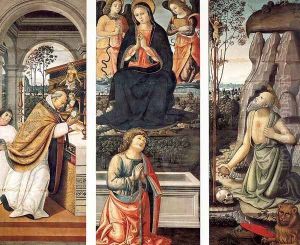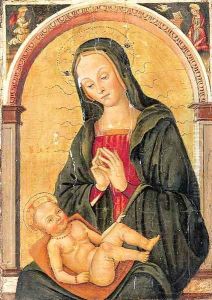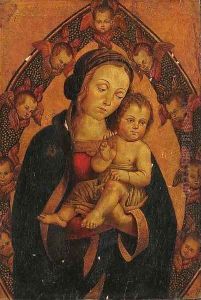Antonio del Massaro (Pastura, II) Paintings
Antonio del Massaro, also known by his nickname 'Pastura II,' was an Italian painter of the Renaissance period, born in 1450 in Viterbo, a city in central Italy. His artistic journey reflects the vibrant cultural transformations that characterized the Italian Renaissance, a period marked by a revival of interest in the classical arts and sciences. Massaro's work, although not as widely recognized as some of his contemporaries, played a significant role in the artistic landscape of his time, especially in his native region of Lazio.
Antonio del Massaro's early life remains somewhat obscure, with few records detailing his training or initial influences. However, it is believed that he was part of a family of artists and that his nickname 'Pastura II' suggests a continuation of a familial artistic legacy. His body of work indicates a profound understanding of the human form, a keen eye for detail, and a deep appreciation for the narrative potential of religious and mythological subjects, which were common themes of the era.
During his career, Massaro was known for his frescoes and panel paintings, which often depicted scenes from the Bible and classical mythology. One of his most notable works includes the frescoes in the church of Santa Maria della Verità in Viterbo, which showcase his mastery of perspective and his ability to create depth and emotion through his use of color and light. These works also reflect the influence of other Renaissance masters, blending elements of the Roman and Florentine schools of painting, which were dominant forces in Italian art at the time.
Massaro's contribution to the Renaissance was not limited to his paintings. He was also involved in the broader cultural movements of his time, participating in the intellectual and artistic debates that defined the era. Through his work, he contributed to the development of Renaissance art in Viterbo and the surrounding regions, helping to spread the new artistic ideas and techniques that were emerging from the major centers of Florence, Rome, and Venice.
Antonio del Massaro died in 1516, leaving behind a legacy that, while perhaps not as celebrated as that of some of his peers, remains an important part of the tapestry of the Italian Renaissance. His works continue to be studied and admired for their beauty and technical skill, offering insights into the artistic innovations and cultural shifts of his time.


